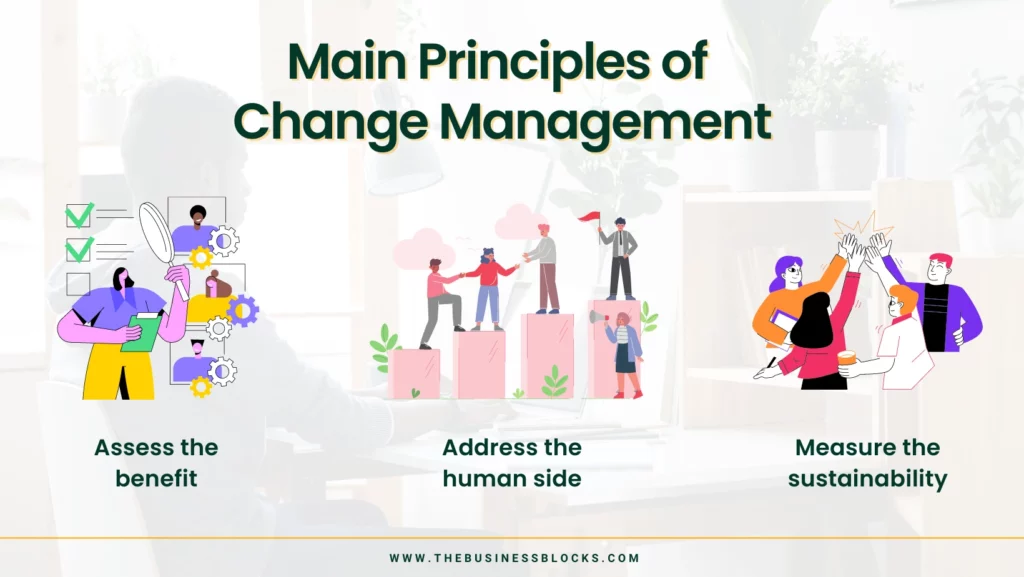With new technologies emerging at a quick pace, the development of remote work, and supply chain disruptions affecting organizations worldwide, change is inevitable and constant.
However, it’s essential to consider that people are generally averse to change – around 75% of business transformation attempts fail or are abandoned. Nevertheless, change management training can catalyze a successful or failed transformation endeavor. Change is more likely to stick when people are sincerely invested in it.
Let’s dive into the main principles of implementing successful change management training, what leaders can learn from the process, and how change management benefits an organization overall.
What is change management training?
Change management refers to the process, including a digital adoption strategy and tactics that an organization will use to handle the people side of change – how people and teams are affected by the organizational transformation. It is specifically concerned with the planned change process required to achieve a planned business purpose.
The ultimate goal of change management training is to limit the possibility of undesirable outcomes due to organizational evolution. Learning and development leaders may assist their people in avoiding common mistakes that delay transformation by developing a comprehensive training program.
What are the main principles of change management?

Innovative organizational change can connect with employees to make them feel appreciated and empowered. Being personal, engaging, and emotionally open to recognizing employee needs while being vulnerable and accessible for support is the current leadership style. With this in mind, let’s break down the main principles of change management.
Assess the benefit
A clear assessment of what needs to change is required for any change to be successful. Everyone engaged must be clearly aware of the endpoint and why they must change. Understanding the “why” is frequently called the burning platform or the compelling argument for change. Only once you’ve determined the “what” and “why” can you begin to design the message.
Address the human side
Any significant change generates concerns. Employees will be unsure and resistant as new leaders are expected to step up, roles will be modified, and new skills and competencies must be acquired. Your employees will need motivation during periods of change. Dealing with these difficulties on a case-by-case basis jeopardizes speed, morale, and results.
A formal method to manage change should be designed early, starting with the leadership team and then with essential stakeholders and leaders, and it should be revised as change goes through the company.
Measure the sustainability
As previously stated, most of us have a knee-jerk reaction to change. We will test the new change initiative and try to overcome any emotional resistance. Then, when a deadline approaches and the pressure mounts, we revert to our prior behavior. Your change in success rate may begin to suffer at this point.
Identifying the pain points is critical for clearly understanding what is and isn’t working. Once the critical areas have been identified, it is time to work cooperatively through the identified difficulties and design robust solutions.
What can leaders learn from change management training?
Managers are at the heart of many corporate transformations. They usually provide resources, supervise people implementing the change, and coordinate change procedures. Finally, their support is required for the entire team to succeed.
Leaders, however, can only grasp what their team is experiencing or teach others how to learn from these experiences if they have the necessary skills for leading people in a change endeavor.
Through successful change management training, leaders can gain enhanced self-awareness, learn how to navigate collaboration through teamwork, and, perhaps most importantly, the ability to cope with change. Leaders in senior roles are under a lot of pressure to perform well and not express their feelings. Yet, part of good change leadership is dealing with change honestly, showing employees it is alright to be vulnerable and seek help.
How does change management training improve a business?

Firstly, change management training increases the likelihood of success. Refresher leadership training for executives can be beneficial in ensuring that they are positively and productively leading their staff.
Secondly, any company’s goals, strategies, and tactics are only the tip – other critical details such as beliefs, expectations, principles, and shared assumptions may lie beneath the surface, which means employees have very little visibility into how the organization in which they work conducts business. Change management training helps maintain visibility and encourage belonging.
Lastly, change management training improves employee engagement. Leaders must be trained to communicate the transition message progressively to their terms, then gather feedback from individuals and use it to encourage change.
Conclusion
Change cannot be avoided. Changes can have a beneficial or harmful impact on your organization. But, if the transition process is effectively managed, the change will be progressive and profitable. In the end, your organization will make significant progress, securing your better future.
